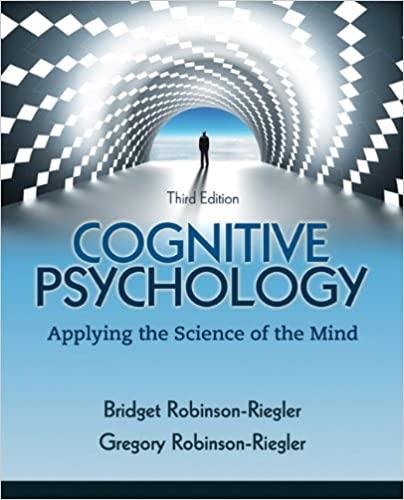Question
Discuss how you would use the data collected by your colleague to guide the next step in the planned change process or to inform future
Discuss how you would use the data collected by your colleague to guide the next step in the planned change process or to inform future work with clients.
Case
The client was a 13-year-old female who had experienced physical and sexual abuse from family members, witnessed domestic and sexual violence, witnessed drug use, and witnessed suicide attempts by her parents and siblings. The client was placed in foster care for the second time with no contact with her biological family and started experiencing behavior issues at home and school that were putting her at risk of disrupting her foster placement.
Presenting Problem
A 13-year-old female client, who has been placed in foster care for the second time after being removed from her biological home due to significant sexual and physical abuse, neglect, and an unsafe environment, is now experiencing behavior issues in the foster home and at school and is at risk for disruption.
Intervention
To promote resiliency with this client I would suggest equine therapy. This client loves animals and Turner (2017) states that acquiring a new hobby or interest may help promote resiliency ( p. 449). Turner also listed therapeutic horse riding as an intervention that benefits vulnerable children (Turner, 2017, p. 445). I have previously been certified through EGALA to practice equine-assisted psychotherapy and the emotional benefit of working with horses is impressive.
Tool
This client would benefit from the Resilience Scale for Adolescents (READ) tool (Smith-Osborne, 2007, p. 117-1188). The instrument is appropriate for her age and has been validated by a study on this client's age group, 13-15 (Smith-Osborne, 2007, p. 118). This tool is also the only one listed that covers the full resilience construct and rates 5 factors including personal competence, social competence, structured style, family cohesion, and social resources (Smith-Osborne, 2007, p. 118- 119). Given the client's history and current issues within the foster home, these would be great factors to consider. This form is also free to use. Other forms on the list must be purchased which would make readministering it for progress difficult (Smith-Osborne, 2007, p. 118). This form could be given before and after interventions at reviews to show progress over time.
Resources
Smith-Osborne, A. (2007). Life span and resiliency theory: A critical reviewLinks to an external site.. Advances in Social Work, 8(1), 152-168. https://doi.org/10.18060/138
Turner, F. J. (Ed.). (2017). Social work treatment: Interlocking theoretical approaches (6th ed.). Oxford University Press.
Step by Step Solution
There are 3 Steps involved in it
Step: 1

Get Instant Access to Expert-Tailored Solutions
See step-by-step solutions with expert insights and AI powered tools for academic success
Step: 2

Step: 3

Ace Your Homework with AI
Get the answers you need in no time with our AI-driven, step-by-step assistance
Get Started


